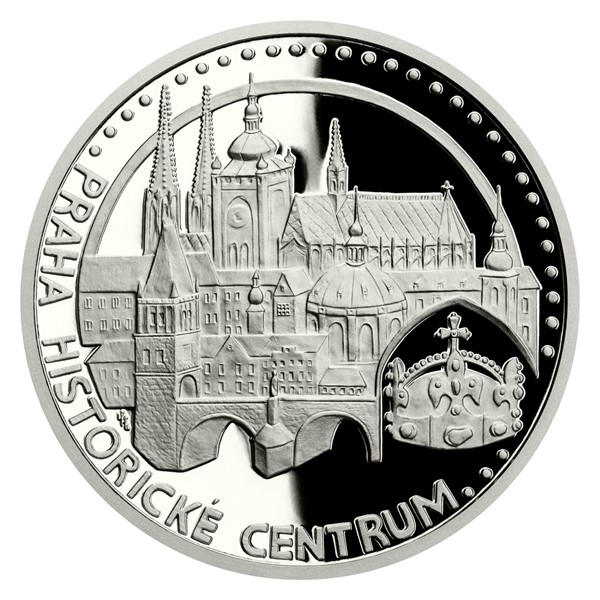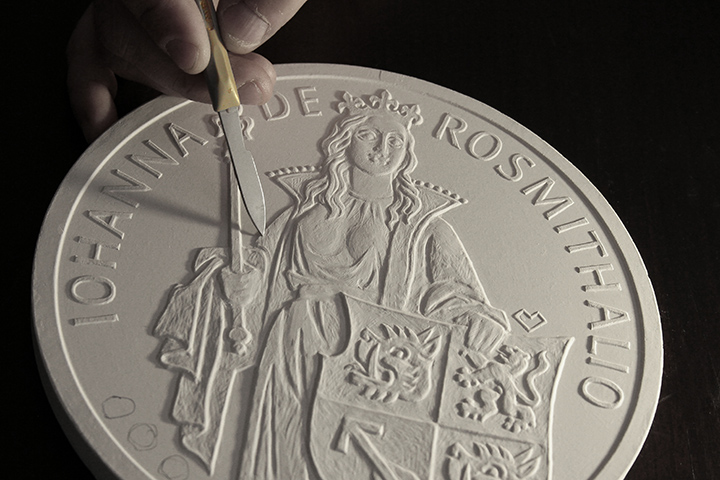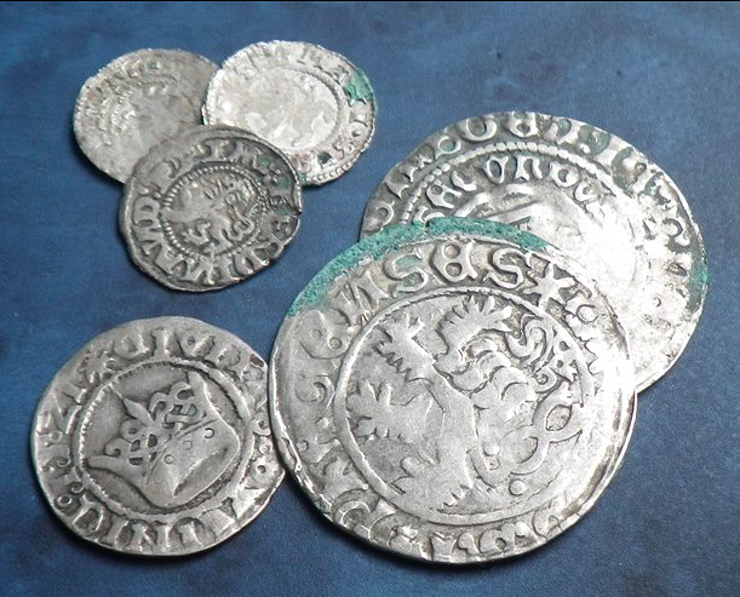New Reasons On Engraving Czechoslovakia Medals
Wiki Article
How Do High-Precision Cnc Machines Cut The Design Into A Die Or Master Hub That Is Used To Create Gold Medals, Coins, Or Coins?
In the production of master hubs (or dies) to make gold coins or medals, CNC machines with high precision are crucial. This article provides an overview of the procedure for CNC programming.
Software called CAD (Computer Aided Design), can be used to design digital 3D models of coins and medal designs.
CAM (Computer-Aided Manufacturing) software generates toolpaths as well as instructions for the CNC machine based on the 3D model.
Select the correct material to cut dies
Materials of high-quality and long-lasting like brass, steel or hardened alloys are used to be used for CNC machining the master hub or die. These materials can resist the high-pressure hitting process and ensure a precise reproduction.
Setup and Fixturing
Fixing the material securely onto the CNC machine’s worktable or vice is crucial for machining precision. It is essential to fix it correctly in order to prevent vibrations during the machining.
CNC Machining Process
CNC machines use cutting tool like ball mills or end mills that cut out the design inside the hub master or die.
The CNC machine follows the programmed toolpaths and precisely removes material from the blank block in line with the 3D model's specifications.
You can choose from a variety of shapes and sizes for cutting out the designs of a medal or coin.
CNC machines are governed by computer algorithms that guarantee accuracy up to a micrometer.
Finishing & Refinement
The hub master, also known as a die, is then refined.
Polishing, smoothing, and detailing with a hand-held device or with specialized tools will make sure the finish of the surface meets the required standards.
Quality Control and Inspection-
The final die, or hub is then put through an extensive inspection by the aid of measurement tools, such as micrometers, gauges and other optical measuring instruments to make sure it satisfies all design specifications.
Treatment with hardening (optional) and Treatment
Some dies will undergo heat or surface treatments to improve their durability.
CNC machines have the precision and capability to accurately replicate intricate designs on dies, master hubs, or any other tools. Die sets provide the tooling to strike gold coins or medals in a consistent manner precisely, with fine detail. Check out the most popular CNC Machining Prague Mint gold medals website examples including silver and gold buyer near me, buy gold bars, 24k gold coin, michael phelps medal, american eagle gold coin, gold coin with angel on both sides, gold bullion bars for sale, chinese gold coins, 1 10 american gold eagle, buy gold silver and more.

Why Do Dies Used For Striking Gold Coins Or Medals Go Through Vacuum Hardening Processes?
Vacuum hardening is a process that involves exposing dies to extreme temperatures and a controlled environment in the furnace. This is an overview of the process of vacuum hardening for dies.
To make dies that will be used to make coins or medals, they must be free of any contaminants or residues.
Loading into vacuum furnace
The dies are inserted into the vacuum furnace. It is a specialized chamber for heat treatment that is capable of creating an atmosphere of vacuum.
Evacuation of Air
The vacuum furnace removes air from the chamber, creating the perfect vacuum, free of oxygen and other gases. This is to prevent oxidation as well as ensure uniform heat treatments.
Heating Phase
The furnace must be heated to the appropriate temperature required for the dies to be hardened. The range of temperatures is determined by the particular material and the processing for hardening.
Soaking in High Temperatures
The material can reach the desired hardness and the metallurgical structure is created.
Cooling or quenching
With the help of special techniques using specialized techniques, dies are swiftly cool down or melted after the soak process. This process of rapid cooling helps to ensure the desired level of strength and hardness of the metal.
Tempering is optional
In certain instances, a tempering step is carried out following the hardening phase. Tempering is the process of heating dies to a lower temperature in order to relieve internal tensions and improve durability.
Quality Control and InspecQuality Control and Inspection
Dies that are hardened must go through rigorous quality control and inspections to attain the desired toughness, hardness, or tolerances.
Post-Treatment Handling-
Die dies are coated or polished and then used to create coins or medals.
The process of hardening by vacuum increases the wear resistance, durability, and lifespan of the dies used to create gold medals or coins. This process creates a controlled atmosphere free of atmospheric contaminants to ensure consistent and reliable hardening. It also contributes to the overall quality of the minted product. Check out the best vacuum hardening Prague Mint gold coins more advice including 1 ounce gold, kruger rand, kruger rand, silver and gold buyer near me, buy gold bullion, price of 1 oz of gold, gold eagle coin, saint gaudens gold coin, buy coin gold, gold medal of olympic and more.

What Are The Different Ways In Which Gold Coins Or Medals Are Coated In Order To Protect Them?
Gold coins or medals can undergo coating treatments for different reasons, such as protection, enhancement of appearance or to create particular aesthetic results. These are some of the coating techniques that are utilized.
Clear Protective (Varies). A protective clear coating like lacquer is used to shield surfaces from oxidation. This coating helps maintain the coin's original look and protects any metal underneath.
Enhancement of Appearance
Gold plating, also known as gildingA surface of a gold-plated coin or medal can be gilded or coated with a fine layer of of gold. The item will appear more elegant and shiny.
Aesthetic effects
Patina and antique finishes Special coatings can be used to produce the antique or patina effect. This method artificially ages the surface and creates an aged, oxidized appearance.
Coloration and Coloring- Certain parts of a medal or coin are colored by using special coatings or enamels. This is done to highlight certain features of the design, to add contrast, or create an interest in the eye.
Anti-Tarnish Coatings-
Anti-Tarnish Solution - If your medal or coin has intricate designs, or certain areas that are susceptible to tarnishing you may want to apply anti-tarnish solution. The coatings protect the surface of the metal from discoloring or oxidizing over time.
Specialized Coatings to Guarantee the security of your information or authenticate it
UV-Reactive Coatings. Certain metals and coins are coated with a special UV-reactive coating which reacts to UV radiation. It reveals hidden elements like encryption or security codes.
Selective Coatings that have Contrast
Selective Coating Removal- Sometimes the coating is removed selectively from particular areas of a coin or medal to provide contrast between polished and coated surfaces. This highlights the design aspects.
Each coating has a purpose. It may be to shield the metal from damage or improve its appearance. It can also provide security features. The coatings have a major impact on the durability and visual appeal of gold coins and medals. They also enhance the value of these items. Follow the recommended coating Prague Mint gold coins website recommendations. including gold bullion price, 1 oz gold coin, guardian angel coin, gold price coin today, buy gold biscuits from bank, 50 pesos gold coin, gold penny, coin gold bullion, bullion dealers, buy gold bars and more.

How Can You Achieve The Vintage Look Of Gold Medals Or Coins?
This is the way it's done. Here's why and how this can be achieved.
Chemical Patination- Chemical processes involving patina-inducing solutions or acids are applied on the surface of a coin or medal. These solutions cause a controlled oxidation and tone to give the appearance of antique coins. This process highlights the particulars of your design and give it depth.
Artificial Aging- Mechanical or chemical techniques are employed to create a fake age on the surface, simulating the natural wear and tarnish which occurs as time passes. Tools or treatments that are abrasive can be employed to create worn or scratched areas on coins.
Staining or Toning - Specialized heat treatment or solutions are employed for toning or staining the surface. They produce different shades or hues. This is a way to simulate the natural discoloration and toning of the skin that happens over time.
Buffing & Polishing Techniques - A certain area is picked to be buffed or polished in order to remove the layer of surface or highlight, creating contrast or giving an appearance of wear or aging.
The reasons to create an Antique Appearance
Visual Attractiveness - Many collectors or collectors and enthusiasts select medals or coins with a vintage look for their aesthetic appeal. The look of aging adds character to the design, depth, uniqueness, and also makes it attractive visually.
Historical or Commemorative Importance - Coins and Medals which commemorate historical events or period may be seasoned to create a sense of authenticity or replicate coins from a particular time.
Coins and medals that are antique are sought-after by collectors who want rare pieces or limited editions. Their age-related appearance can boost the value of their collectibles.
Highlighting Design Details - Aging processes can bring out the fine details of the design by creating contrast between raised and recessed areas, making the design components more pronounced and obvious.
Minting authorities who are artistic may use aging methods as a way of expressing their artistic style. They may enhance the depth of the style, tell a story, or even include symbols.
A deliberate artistic choice that creates an antique look on gold coins or medals may bring back memories or increase interest to the visual. It also can convey a sense history. It is crucial to strike a balance between the aesthetics and the inherent value of the coin. Follow the top rated antique finish of Czechoslovakia gold coins blog advice. including gold buffalo, gold eagle coin, gold coin with angel on both sides, 10 dollar gold coin, gold quarter 2000, gold bullion for sale, 100 gm gold biscuit, george washington gold dollar coin, 24k gold coin, american buffalo coin and more.
